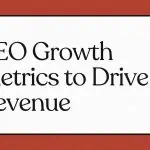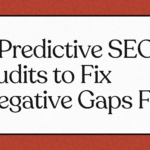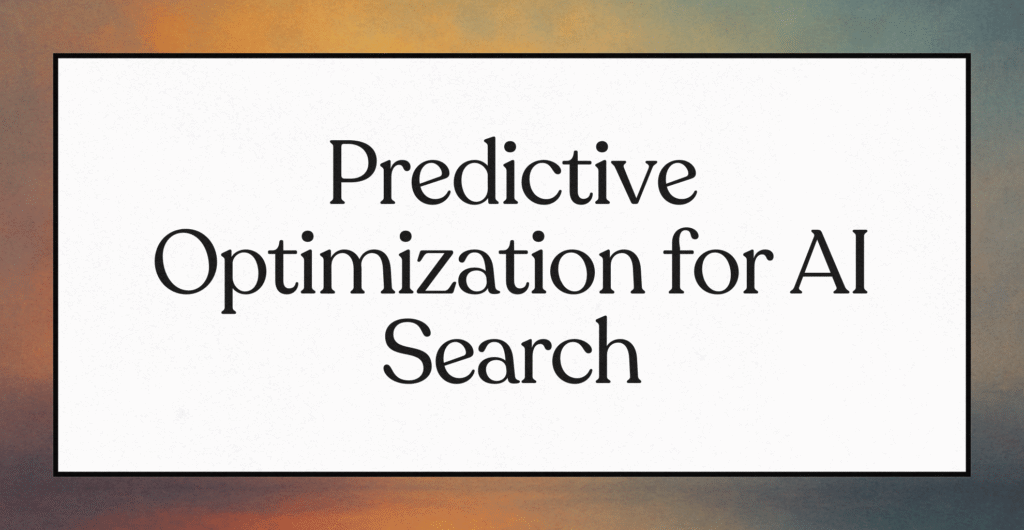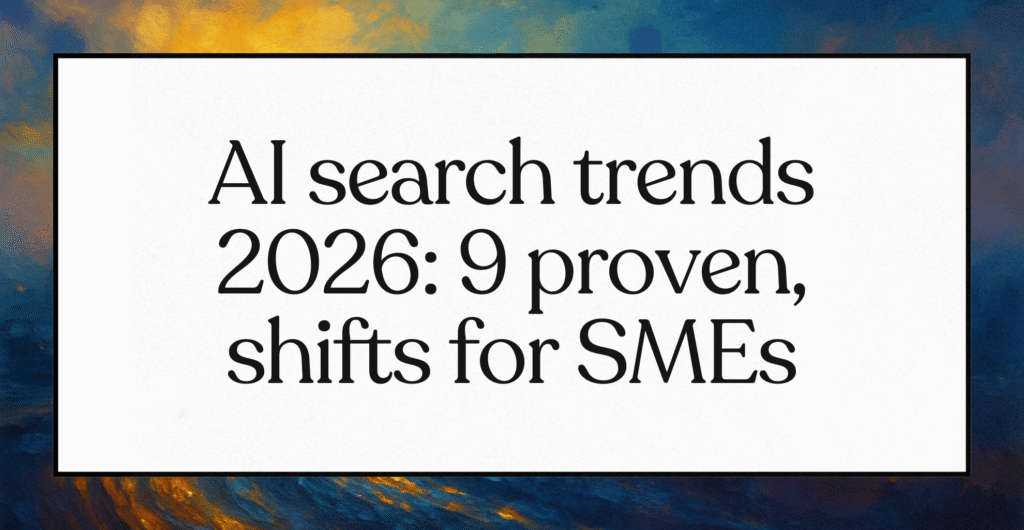Summary
An e-commerce site in March 2025 reversed a sudden 40% organic traffic loss and restored 90% of rankings overnight by using real-time SEO metrics and instant SERP anomaly alerts. The article charts the shift from lagging reports to live, AI-driven analytics that track behavioral signals such as engagement time, CTR fluctuations, scroll depth, and pogo-sticking alongside technical indicators like Core Web Vitals, indexation status, and server health while predictive models forecast keyword demand, algorithm updates, and user behavior. It details dashboards and ROI-focused KPIs for 2025 such as customizable alerts, cross-platform integration, organic revenue attribution, cost per organic acquisition, lifetime value, plus future-proofing trends including entity-based SEO, voice and visual search, AI content evaluation, and agile continuous testing.
In March 2025, a mid-sized e-commerce company watched in horror as its organic traffic plummeted 40% overnight. While competitors scrambled to diagnose the issue in the following days, this company identified and addressed the problem within hours, restoring 90% of their rankings by the next morning.
Their secret weapon? A sophisticated real-time SEO metrics system that immediately flagged unusual user behaviour patterns and SERP position changes. This isn’t science fiction-it’s the emerging reality of SEO in 2025, where the ability to monitor, analyze, and act on live data has become the definitive competitive advantage.
This swift action saved their rankings and prevented a potential loss of thousands of dollars in revenue. It’s a clear demonstration of the business value of real-time SEO metrics.
Evolution of SEO Metrics
The journey of SEO measurement has undergone a significant evolution over the past decade. What started as simple keyword rankings and monthly traffic reports have evolved into sophisticated systems that capture and interpret data in real time.
This shift represents a fundamental change in how we approach search engine optimization, keeping you, the reader, informed and up-to-date with the latest trends in the industry. By understanding this evolution, you can stay ahead of the curve and adapt your strategies to the changing SEO framework.
In the early days of SEO, practitioners relied heavily on lagging indicators-metrics that told them what had already happened.
Website owners would wait weeks or months to determine if their optimization efforts succeeded. By 2022, many had progressed to what we might call ‘near-time’ SEO, with daily updates and more comprehensive analytics.
However, the year 2025 demands accurate real-time SEO metrics that report what’s happening now and predict what will happen next. This shift emphasizes the urgency and necessity of adopting these strategies for your business’s success, making it clear that real-time SEO metrics are a luxury and a crucial tool for survival in the competitive online market.
The advancement of machine learning algorithms and AI-powered analytics has revolutionized how we monitor and interpret SEO data. Today’s cutting-edge systems don’t just track changes and forecast outcomes based on emerging patterns, allowing for proactive rather than reactive strategy adjustments. This predictive capability, powered by machine learning and AI, represents the new frontier in SEO measurement, where anticipating algorithm updates and user behaviour shifts gives savvy marketers a significant edge.
As one industry expert noted in early 2025, “The difference between success and failure in modern SEO often comes down to response time. You can’t respond to what you don’t know is happening.” This observation perfectly captures why real-time metrics have become indispensable.
Critical Real-Time SEO Metrics for 2025
The most valuable real-time SEO metrics in 2025 go far beyond traditional measurements. These indicators provide immediate feedback on performance while offering predictive insights that allow forward-thinking strategy adjustments.
Behavioural SEO Data and User Engagement Metrics
User behaviour signals have become critical ranking factors as search engines increasingly prioritize user experience. The most effective real-time behavioural metrics include:
- Engagement Time: Moving beyond the limitations of dwell time, engagement time measures active interaction with content through scrolling, clicking, and video engagement. This provides a clearer picture of how users interact with your content.
- Click-Through Rate (CTR) Fluctuations: Real-time monitoring of CTR changes can alert you to SERP display issues or relevance problems that require immediate attention.
- Scroll Depth Analysis: How far users scroll through your content provides instant feedback on content engagement and helps identify where interest begins to wane.
- Pogo-Sticking Detection: When users quickly jump back to search results after visiting your page, it signals dissatisfaction-a powerful negative indicator that requires immediate investigation.
These behavioural metrics have become increasingly important as search engines like Google refine their ability to interpret user satisfaction signals. Real-time behavioural data alerts you to potential issues before they impact your broader SEO performance.
Technical Performance Indicators
Technical health metrics that demand real-time monitoring include:
- Core Web Vitals Fluctuations: Immediate alerts for Largest Contentful Paint (LCP), First Input Delay (FID), and Cumulative Layout Shift (CLS) degradation can prevent significant ranking drops.
- Indexation Status Changes: Real-time tracking of crawling and indexing patterns helps identify potential technical issues before they affect visibility.
- Server Performance Metrics: Monitoring real-time response time variations and server errors prevents real-time and negative user experience signals that can trigger ranking penalties.
Modern SEO dashboards now integrate these technical metrics with behavioural data to provide a comprehensive picture of performance that updates by the minute rather than by the day or week.
Leveraging Predictive SEO Analytics for Strategic Advantage
Predictive SEO analytics represents one of the most significant advancements in search optimization strategy for 2025. This approach uses historical data, statistical algorithms, and machine-learning techniques to forecast future trends and outcomes.
The most sophisticated predictive analytics systems in 2025 can:
- Forecast Keyword Performance: By analyzing search volume trends and patterns across industries, these tools can predict future demand for specific keywords, allowing you to optimize content before search volume peaks.
- Predict Algorithm Updates: By detecting patterns in ranking fluctuations across thousands of websites, predictive systems can now identify the early signs of algorithm updates, giving you time to prepare.
- Anticipate User Behavior Shifts: Advanced models examine historical performance and user interaction patterns to predict how new content might perform and how user needs might evolve.
Implementation of predictive SEO analytics requires robust data collection systems and properly trained machine learning models. Companies investing in these capabilities are seeing significant advantages in competitive search ecosystem, with some reporting up to 40% improvements in new content performance compared to traditional optimization approaches.
Real-Time Traffic Analysis: Beyond Basic Visitor Counts
Real-time traffic analysis has evolved substantially beyond simple visitor counting. Today’s advanced systems provide immediate insights into traffic quality and user intentions as they interact with your site.
Quality Signals in Real Time
Modern SEO platforms track not just how many visitors arrive but the quality indicators that predict their value:
- Search Intent Alignment: Real-time analysis of user paths can determine if visitors from specific queries find what they seek, allowing immediate content or meta-tag adjustments.
- Conversion Micrometrics: Systems now track micro-conversions (like email signups or PDF downloads) as they happen, providing immediate feedback on content performance.
- Source Quality Assessment: Not all traffic is created equal, and 2025’s tools instantly categorize and evaluate traffic sources based on engagement quality and conversion potential.
User Journey Tracking
Real-time path analysis allows SEO professionals to visualize how users navigate their sites:
- Entry Point Optimization: Immediate identification of the most effective landing pages for specific queries allows for rapid resource allocation to high-performing content.
- Exit Point Alerts: Real-time notifications when exit rates spike on specific pages enable immediate investigation and remedy of user experience issues.
- Cross-Device Journey Mapping: Today’s systems track users across devices in real-time, providing a holistic view of the complete customer journey as it unfolds.
As one SEO director at a Fortune 500 company recently noted, “Real-time traffic analysis has transformed our ability to respond to opportunities. We no longer wait for monthly reports to tell us what’s working now within minutes and can scale successful content immediately.”
SEO Dashboards and Tools for Live Performance Tracking
The role of real-time SEO metrics within dashboards has expanded rapidly. By 2025, the most advanced platforms no longer wait for batch updates. They deliver constant streams of live data, making it possible to adjust strategies the moment conditions shift.
Leading Dashboard Solutions
A range of tools now provide reliable real-time SEO metrics for both in-house teams and agencies:
- Google Looker Studio: Expanded to handle direct connections to thousands of sources, its dashboards refresh continuously and surface the latest real-time SEO metrics without delay.
- Morning Score: Tailored for keyword ranking updates, backlink changes, and SEO health monitoring, this platform highlights real-time SEO metrics in an accessible interface.
- Agency Monitor: Built for scale, it tracks multiple campaigns with filters and instant signals, ensuring agencies act on fresh real-time SEO metrics across all clients.
- Semrush and Ahrefs: Both now generate instant ranking alerts, backlink movements, and competitor actions. Their real-time SEO metrics help marketers see shifts before they become trends.
Essential Dashboard Features
What sets apart the strongest dashboards is their ability to connect live monitoring with practical decision-making. These include:
- Customizable Alerts: Teams define thresholds that trigger notifications based on the latest real-time SEO metrics.
- Data Visualization: Clear visual layers transform complex real-time SEO metrics into patterns that stakeholders can understand quickly.
- Cross-Platform Integration: Dashboards unify real-time SEO metrics with CRM, analytics, and automation systems.
- AI-driven Highlights: Automated recommendations surface when real-time SEO metrics indicate meaningful shifts that deserve immediate action.
Every organization has unique requirements. The most practical choice balances flexibility in API connections, visualization options, and predictive features. Above all, businesses should focus on solutions that allow real-time SEO metrics to guide decisions, not just report history.
Measuring SEO Growth Indicators That Actually Matter
Today, distinguishing between vanity metrics and accurate growth indicators has become essential. The most valuable growth metrics combine immediate feedback with predictive value.
Leading vs. Lagging Indicators
Effective SEO measurement now requires tracking both types of indicators:
- Leading Indicators: Metrics that predict future performance, such as content engagement rates, SERP feature capture, and entity association strength. These provide early warning of ranking changes before they materialize.
- Lagging Indicators: Traditional measures like overall organic traffic and conversion rates confirm the effectiveness of your strategy but don’t provide immediate actionable insights.
The most sophisticated SEO programs maintain dashboards showing both types, with greater emphasis on leading indicators that enable proactive optimization.
ROI-Focused Metrics
As SEO has matured as a discipline, connecting activities directly to revenue has become imperative.
The most valuable ROI metrics include:
- Organic Revenue Attribution: real-time tracking of revenue generated from organic search visitors, broken down by landing page and keyword.
- Cost Per Organic Acquisition: measuring the SEO investment required to acquire a customer through organic search, compared against other channels.
- Lifetime Value of Organic Visitors: this analysis shows how visitors from different organic sources compare the business in terms of long-term value.
These metrics help justify SEO investments and guide resource allocation decisions by demonstrating the tangible business impact of organic search efforts.
Future-Proofing Your SEO Strategy with Live Data Insights
As we move deeper into 2025, several emerging trends reshape how we use real-time SEO data to future-proof search strategies.
SEO Trends 2025: What’s Changing
The most significant developments affecting real-time SEO metrics include:
- Entity-Based SEO Measurement: moving beyond keywords to track how effectively content establishes entity associations and semantic relevance in real-time.
- AI-Generated Content Evaluation: new metrics measuring how AI-generated content performs compared to human-created content, with real-time feedback loops for optimization.
- Voice and Visual Search Performance: Dedicated metrics track performance in these growing search modalities, which require optimization approaches different from traditional text search.
- Core Experience Metrics: Google’s increasing focus on user experience has elevated metrics like engagement rate and interaction depth to primary importance for rankings.
Creating an Agile SEO Approach
The availability of real-time data enables truly agile SEO methodologies:
- Continuous Testing Cycles: Rather than quarterly or monthly updates, leading teams implement daily tests and optimizations based on real-time feedback.
- Dynamic Content Adjustment: Content automatically adjusts based on real-time performance data, with AI systems modifying elements like titles, headings, and even body content to maximize engagement.
- Predictive Resource Allocation: Using forecasting models to direct resources toward content and keywords predicted to deliver the most significant returns in the weeks or months.
Organizations embracing these approaches are creating significant competitive advantages, with some reporting 30-50% improvements in SEO efficiency compared to traditional timelines.
Implementing Your Real-Time SEO Metrics Strategy
To implement an effective real-time SEO metrics strategy in 2025, follow these essential steps:
- Audit Your Current Measurement Capabilities: assess what metrics you’re currently collecting, how frequently they update, and identify gaps in real-time monitoring.
- Define Key Performance Indicators: Determine which metrics directly impact your business goals and prioritize these in real-time tracking.
- Select Appropriate Tools: choose dashboard and analytics solutions that offer real-time capabilities and predictive features aligned with your needs.
- Establish Alert Thresholds: Configure notification parameters that balance awareness with actionability to avoid alert fatigue.
- Develop Response Protocols: create transparent processes for how your team will respond to different types of real-time data signals.
- Train Your Team: Ensure all stakeholders understand how to interpret real-time metrics and take appropriate action.
- Implement Continuous Improvement: regularly review the effectiveness of your real-time metrics and refine your approach as technologies and search algorithms evolve.
The Future Is Real-Time
SEO has always been about timing, but the rules are changing fast. The shift from static reporting cycles to continuous monitoring means that real-time SEO metrics are no longer a nice extra. They are the foundation of modern optimization.
Monthly dashboards once defined progress. Now, by the time those numbers arrive, the search results have already shifted. Companies that depend on old reporting cycles risk acting on stale data. Those that adopt real-time SEO metrics move with the rhythm of the search engines instead of playing catch-up.
Search performance changes by the hour. A technical glitch, a competitor’s content release, or a trending query can tilt traffic patterns in minutes. With real-time SEO metrics, teams catch these signals as they happen, preventing long-term losses and seizing opportunities that disappear quickly.
Predictive Power Through Real-Time SEO Metrics
Raw speed is only half the story. The true advantage comes when real-time SEO metrics are paired with forecasting. This combination creates a loop where data not only reflects the present but also indicates where rankings are heading. That foresight is what sets top-performing programs apart.
The gulf between companies with live monitoring and those without is widening. Those who act on real-time SEO metrics can adapt strategies daily, while slower organizations are left reacting weeks later. This difference defines market leaders and laggards.
The best strategies combine multiple signals. Real-time SEO metrics should track user behavior, crawl efficiency, indexation health, and ranking volatility together. When these dimensions are aligned, the result is a system that both responds to changes and anticipates them.
By 2025, relying on delayed reporting is no longer viable. High-performing SEO is built on immediate, actionable data. Organizations that embed real-time SEO metrics into their decision-making process gain the resilience to handle fast-moving search environments and the agility to capitalize on new opportunities as they emerge.
Sources
- https://screpy.com/predictive-analytics-and-seo-a-perfect-match/
- https://morningscore.io/seo-dashboard/
- https://www.luccaam.com/behavioral-metrics-and-seo-performance/
- https://www.promodo.com/blog/forecasting-seo-traffic
- https://entail.ai/resources/seo/seo-kpis
- https://seotoolbelt.co/reviews/keyword-insights/
- https://www.ranktracker.com/blog/optimizing-seo-with-behavioral-intent-signals-user-engagement-and-google-s-ranking-factors/
- https://www.gartner.com/reviews/market/seo-tools
- https://linkilo.co/blog/important-behavioral-metrics-to-track/
Q&A
Q: How did real-time SEO metrics help recover a 40% organic traffic drop in March 2025?
A: They flagged abnormal user behavior and SERP position changes instantly, enabling fixes within hours and restoring 90% of rankings by the next morning.
Q: Which real-time behavioral SEO signals matter in 2025?
A: Engagement time, CTR fluctuations, scroll depth, and pogo-sticking reveal satisfaction and relevance in minutes.
Q: What technical SEO metrics need live monitoring to protect rankings?
A: Core Web Vitals changes, indexation status shifts, server response times and error spikes prevent visibility loss.
Q: What dashboards and tools deliver real-time SEO metrics and alerts?
A: Google Looker Studio, Morning Score, Agency Monitor, Semrush, and Ahrefs provide instant ranking alerts, backlink monitoring, and cross-platform integrations.











